Black in Portland
1883–1906
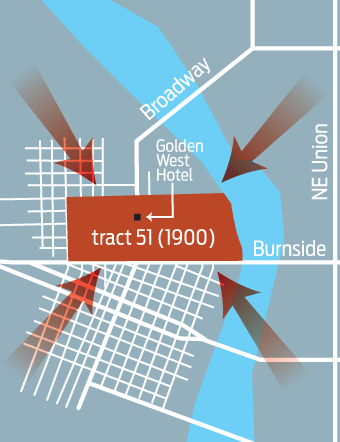
In 1883, African Americans march in a parade celebrating the Northern Pacific Railway’s arrival, the first transcontinental link to Portland. For the town’s fledgling black residents, trains bring two things: more African Americans, and many jobs for waiters, cooks, porters, and laborers. In 1890, the Portland Hotel opens on today’s Pioneer Courthouse Square, employing 75 more African Americans to wait tables—while striking an informal agreement with other downtown employers to not hire any black waiter who quits. Nevertheless, this quasi-indentured servitude pays well, and a black middle class emerges. By 1900, the majority of Oregon’s 1,105 African Americans reside in census tract 51, bordered by the Willamette River, W Burnside Street, NW 12th Avenue, and Glisan Street. Four churches operate in the district, along with numerous black-owned businesses such as the Arcadia and Alpha saloons and Rutherford Haberdashery. The area is “open,” meaning largely police-free and teeming with “sporting houses”—brothels—white, black, Japanese, and French. The hub of black social life is the Golden West Hotel at NW Broadway and Everett, which hosts both church services and all-night gambling.
1906–41
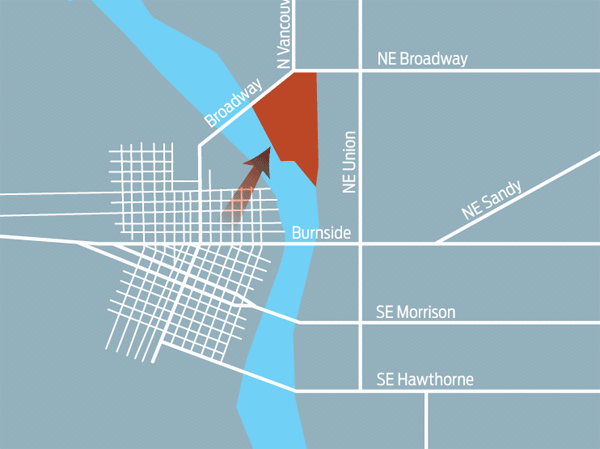
The Lewis & Clark Centennial Exposition in 1905 lures a wave of European immigrants, many of whom have never interacted with blacks. Developers form restrictive covenants for new subdivisions like Alameda and U. S. Grant Place, where no building could be “used or occupied by Japanese, Chinese, or Negroes, except … servants.” The Portland Realty Board forbids sales to nonwhites in white neighborhoods. In 1930, prominent black physician DeNorval Unthank tries to move into Ladd’s Addition, but petitions and repeated vandalism drive him out. Despite segregation, African Americans gain economic strength and community identity. “We have 3,000 colored people,” boasts the Advocate, one of Portland’s three black newspapers. “We have one large hotel, a newspaper, three wealthy people … two postal clerks, one shoe clerk, two stenographers in white offices … three men in the express business, one dentist and physician and two attorneys.” By 1941, the vast majority of Portland’s African Americans live on the east side near the Broadway Bridge, with 98.6 percent of the working population employed in the railroad yards of Union Station and lower Albina.
1942–50
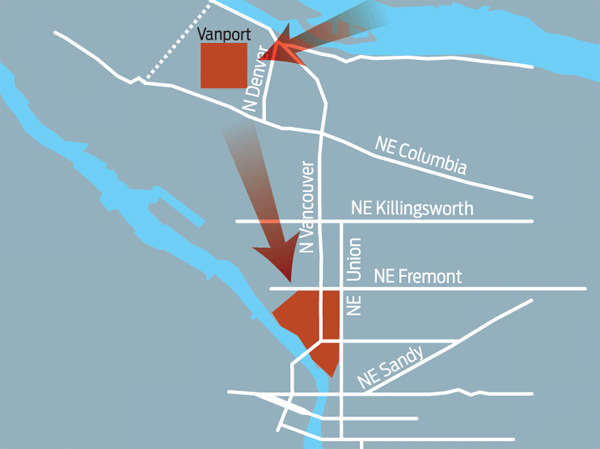
Henry J. Kaiser transforms Portland into the country’s leading producer of military cargo ships, swelling the city’s population by a third, or 160,000. Approximately 25 percent of the newcomers are black. Kaiser builds 10,000 worker dormitory rooms on a stretch of low-lying land between the Columbia Slough and the Columbia River, dubbing it Vanport. When the war ends, most laid-off white workers leave for other cities or other parts of Portland. But many blacks remain, limited by ongoing discrimination in both hiring and real estate sales. The federal postwar housing mortgage insurance program issues maps that circle inner Northeast Portland and other areas with large minority populations in red ink, signifying bad risks—the origin of the term “redlining.” By 1948, approximately 5,000 blacks remain in Vanport, in housing originally built to be temporary. On May 30, the Columbia River, swollen by spring rains, breaks through a railroad dike and, within minutes, Vanport is washed away. Black refugees are mostly confined to census tracts 22 and 23—bounded by NE Fremont and Oregon Streets, Union Avenue (today’s Martin Luther King Jr. Boulevard), and the Willamette River—which see their nonwhite population quadruple to 4,683.
1950–90
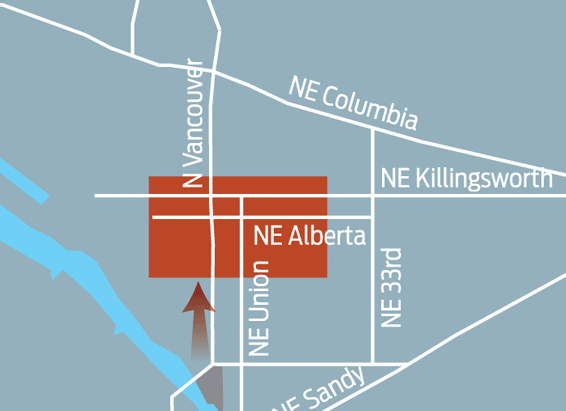
In a 1952 poll, the Urban League asks Portlanders “how close would you allow Negroes” to move to you? Fifty-two percent answer either “Out of sight” or “Wouldn’t allow them in the neighborhood.” In 1956, Portlanders vote to build Memorial Coliseum on the east bank of the Willamette, forcing the clearance of the homes of 150 people. A freeway extension from Broadway to Fremont bulldozes the houses of another 300. Along with homes go dozens of businesses and social clubs—the center of Portland’s African American community. In 1958, the Portland Development Commission creates a 10-year urban renewal plan for the rest of lower Albina area: “clearance appears to be the only solution to … avoid the spread of that blight to other surrounding areas.” In 1970, Emanuel Hospital razes 188 houses and several businesses along N Vancouver Avenue for a new health center, destroying most of the remaining historic black business core. But due to federal budget cuts, Emanuel never breaks ground on the project. The area still remains largely vacant today. By 1990, 85 percent of the city’s black population lives in North and Northeast Portland, but with few businesses and little opportunity to reinvest. The reason: due to persistent red-lining, no one but predatory lenders, an Oregonian exposé reveals, will loan money to African Americans in the area.
1991–Present
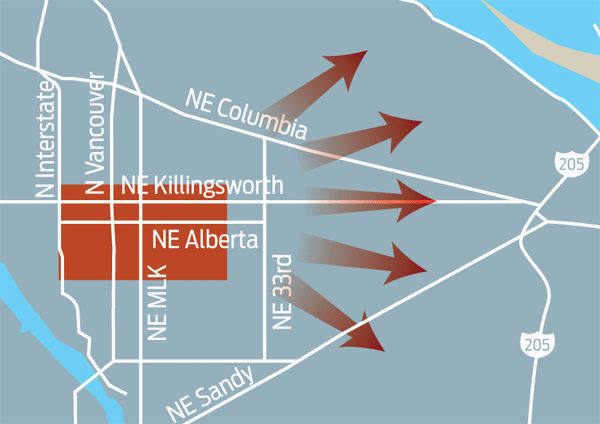
Portland begins a new era with the Albina Community Plan, a blueprint for economic revitalization in North and Northeast Portland adopted by arguably the most liberal city council in Portland history. The plan brings a mix of street improvements, storefront spruce-up loans, and private and nonprofit developments. Two of the most catalytic projects are spearheaded by African Americans: the at-risk-youth center Self Enhancement Inc plants itself in gang-infested Unthank Park, while at the equally troubled intersection of NE 14th Avenue and Alberta Street budding developer Roslyn Hill opens a coffee shop. Hill begins a string of new Alberta businesses and, in 1997, with a group of new Alberta galleries, starts the monthly Last Thursday art walk. Twenty- and 30-something “creatives” begin moving into the area. Interstate MAX and the real estate bubble hasten gentrification, eventually dispersing 41 percent of inner North and Northeast Portland’s African Americans eastward. By 2010, the area’s 22 census tracts lose 8,536 black residents, while 32 tracts east of 82nd Avenue gain 9,134. “We anticipated gentrification and welcomed it to a degree,” says Carl Talton, cofounder of the North/Northeast Economic Development Alliance and former PDC chair. “What we didn’t anticipate was that we wouldn’t be able to manage it and that it would just run away.”
